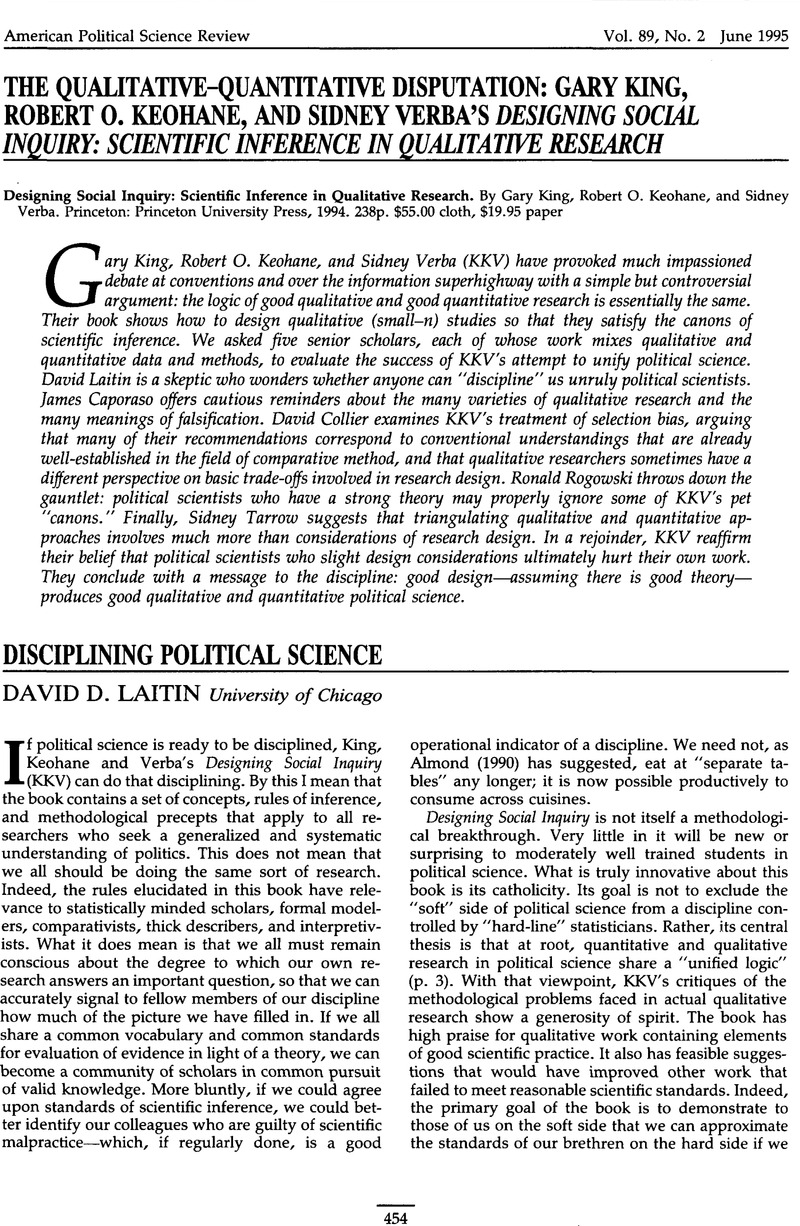Crossref Citations
This article has been cited by the following publications. This list is generated based on data provided by Crossref.
Smelser, Neil J.
and
Recchi, Traduzione di Ettore
1996.
RIFLESSIONI SULLA METODOLOGIA DEGLI STUDI COMPARATI.
Italian Political Science Review/Rivista Italiana di Scienza Politica,
Vol. 26,
Issue. 1,
p.
3.
Lustick, Ian S.
1996.
History, Historiography, and Political Science: Multiple Historical Records and the Problem of Selection Bias.
American Political Science Review,
Vol. 90,
Issue. 3,
p.
605.
Collier, David
and
Mahoney, James
1996.
Insights and Pitfalls: Selection Bias in Qualitative Research.
World Politics,
Vol. 49,
Issue. 1,
p.
56.
Griffin, Larry J.
Caplinger, Christopher
Lively, Kathryn J.
Malcom, Nancy L.
McDaniel, Darren
and
Nelsen, Candice
1997.
Comparative-Historical Analysis and Scientific Inference: Disfranchisement in the U.S. South as a Test Case.
Historical Methods: A Journal of Quantitative and Interdisciplinary History,
Vol. 30,
Issue. 1,
p.
13.
Elman, Colin
and
Elman, Miriam Fendius
1997.
Diplomatic History and International Relations Theory: Respecting Difference and Crossing Boundaries.
International Security,
Vol. 22,
Issue. 1,
p.
5.
Munck, Gerardo L.
1998.
Canons of research design in qualitative analysis.
Studies in Comparative International Development,
Vol. 33,
Issue. 3,
p.
18.
SELIGSON, AMBER L.
1999.
Civic Association and Democratic Participation in Central America.
Comparative Political Studies,
Vol. 32,
Issue. 3,
p.
342.
Bennett, A.
2001.
International Encyclopedia of the Social & Behavioral Sciences.
p.
1513.
Hoffmann, Matthew J.
and
Riley, John
2002.
The Science of Political Science: Linearity or Complexity in Designing Social Inquiry.
New Political Science,
Vol. 24,
Issue. 2,
p.
303.
Kittel, Bernhard
2003.
Politische Ökonomie.
p.
385.
De Bièvre, Dirk
2004.
Governance in International Trade: Judicialisation and Positive Integration in the WTO.
SSRN Electronic Journal,
Hanson, Stephen E.
and
Kopstein, Jeffrey S.
2005.
Regime Type and Diffusion in Comparative Politics Methodology.
Canadian Journal of Political Science,
Vol. 38,
Issue. 1,
p.
69.
Thomas, George
2005.
The Qualitative Foundations of Political Science Methodology.
Perspectives on Politics,
Vol. 3,
Issue. 04,
Dumez, Herve
2006.
Introduction to Special Issue.
European Management Review,
Vol. 3,
Issue. 1,
p.
4.
Dumez, Hervé
and
Jeunemaitre, Alain
2006.
Reviving narratives in economics and management: towards an integrated perspective of modelling, statistical inference and narratives.
European Management Review,
Vol. 3,
Issue. 1,
p.
32.
Johnson, James
2006.
Consequences of Positivism.
Comparative Political Studies,
Vol. 39,
Issue. 2,
p.
224.
Gerring, John
2007.
Is There a (Viable) Crucial-Case Method?.
Comparative Political Studies,
Vol. 40,
Issue. 3,
p.
231.
Clarke, Kevin A.
2007.
The Necessity of Being Comparative:Theory Confirmation in Quantitative Political Science.
Comparative Political Studies,
Vol. 40,
Issue. 7,
p.
886.
Shalev, Michael
2007.
Capitalisms Compared.
Vol. 24,
Issue. ,
p.
261.
Hopf, Ted
2007.
Theory and Evidence in Comparative Politics and International Relations.
p.
55.




Comments
No Comments have been published for this article.